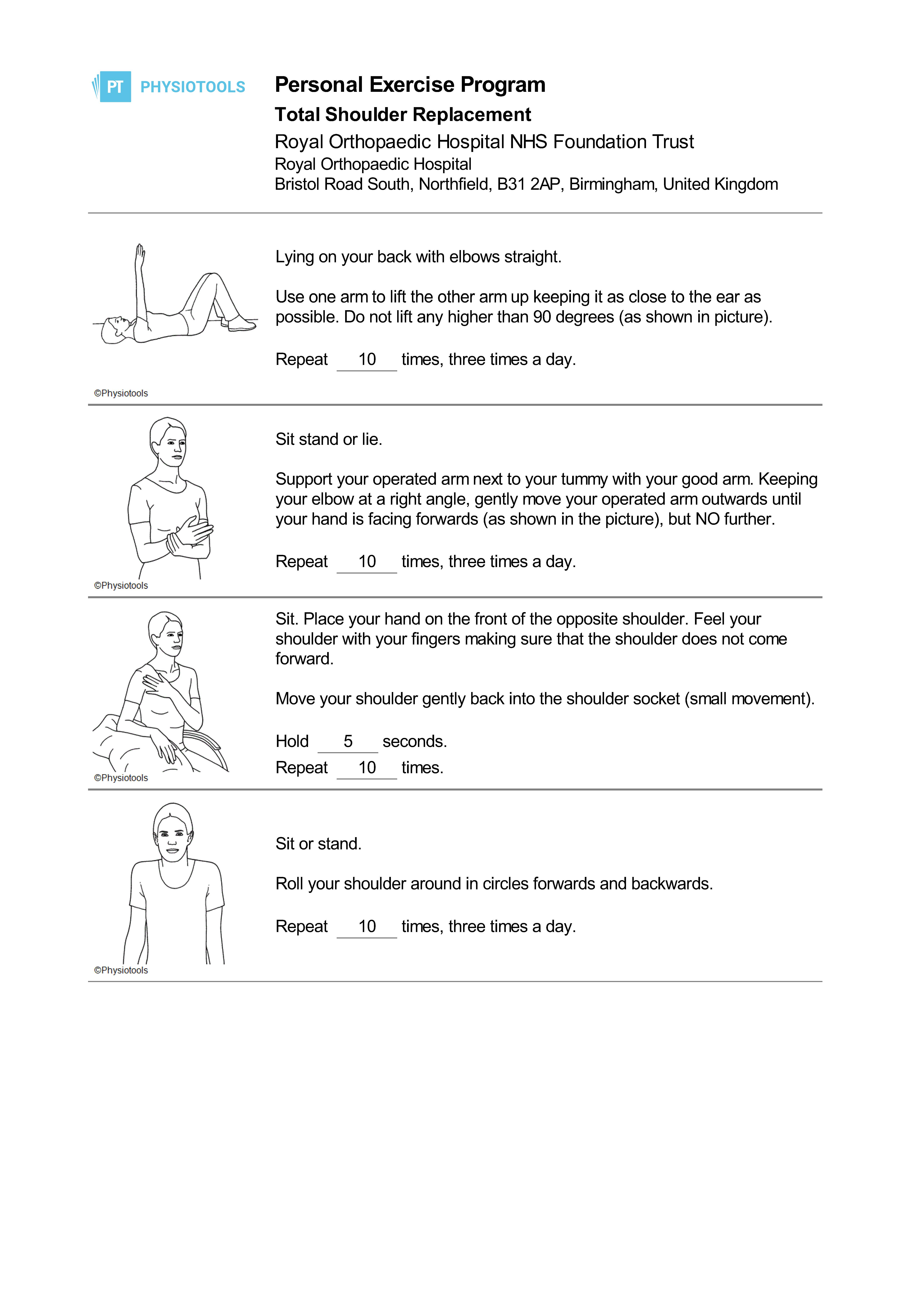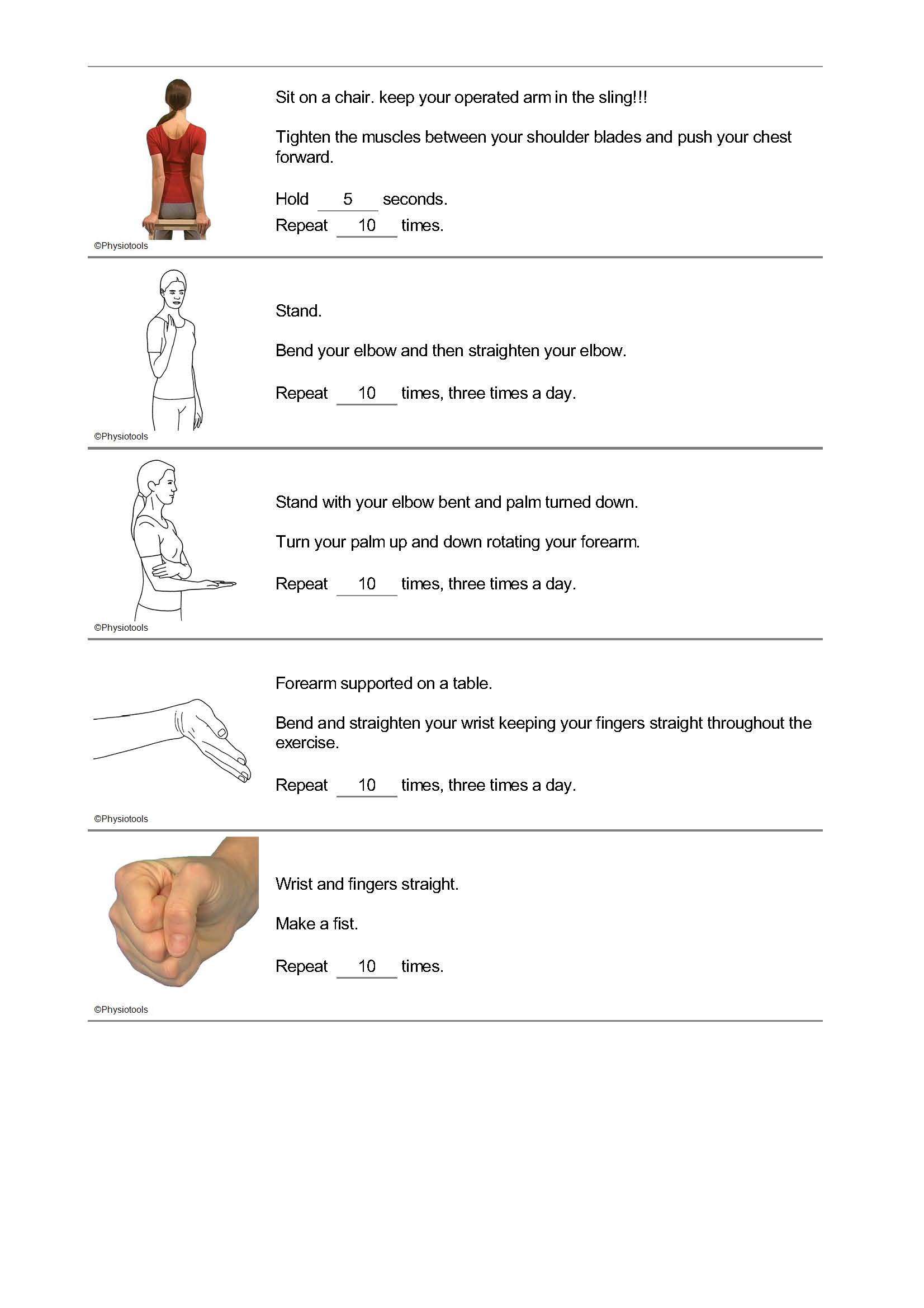
Unconstrained Shoulder Replacement
The shoulder joint is made up of the head of the humerus (the ball) and the glenoid labrum of the scapula (socket). It is the most mobile joint in the body, and these movements are controlled by the number of muscles and tendons that sit around the joint. The four main muscles that stabilise this joint are called the rotator cuff. There is also a joint capsule that sits all around the shoulder joint, and this provides the fluid needed for smooth movement. The ball and socket in a healthy shoulder are covered in a smooth layer called articular cartilage. When this cartilage becomes damaged, such as in arthritis, the bones rub directly together which can be painful and restrict function.
What happens during surgery?
During your operation your Surgeon will replace the damaged joint surfaces in your shoulder with an artificial joint, called a prosthesis. Muscles are then reattached to help make your shoulder more stable.
What should I expect after surgery?
It is important to remember that this operation is usually done to improve your pain and will not necessarily increase your movement. However, you may find that once your pain has improved that you are able to use your shoulder more than before.
Wearing a sling
You will return from theatre wearing a sling to support your arm. This must be worn as advised by your physiotherapist. This must be worn continuously day and night during this time. The sling can only be removed to do your exercises and to wash and dress. Information regarding application of your sling is available from your physiotherapist. After this time, you can gradually wean yourself off the sling. Your physiotherapist can advise you regarding this.
Pain relief
A nerve block is sometimes used during surgery which means your limb may feel numb immediately after your operation. It is normal to feel some pain as the block wears off and you will be provided with some painkillers to help with this. It is important to take these as prescribed to keep pain to a minimum.
Ice
Ice can be helpful to reduce pain/swelling. Protect your dressings from getting wet with a plastic bag. Wrap a bag of ice/frozen peas in a damp towel and apply for 10-15 minutes. This can be repeated every 3-4 hours.
Wound care
Your wounds will need to be kept clean and dry. The nursing staff will provide you with more information about wound care before you go home.
Driving and work
You must not drive whilst wearing your sling. Please discuss this with your consultant or physiotherapist. When you can return to work will depend on what job you do. Your physiotherapist or consultant will be able to advise you on this.
Leisure and sport
Return to previous sport will depend on the particular activity, your strength and movement. Please discuss this with your consultant or physiotherapist before returning to the activity.
Rehabilitation
Rehabilitation is essential if you are going to get the most out of your shoulder operation. Outpatient physiotherapy will normally start between 3—6 weeks after your operation. Your physiotherapist will organise this before you go home.
How quickly will I get back to normal?
Whilst your shoulder is in the sling you will be more or less one handed for all of your daily activities. Once out of your sling, you will be able to use your arm more as advised by your physiotherapist. Remember your shoulder will take approximately 4 to 6 months to significantly improve, with improvement continuing for 12 to 18 months after your operation.
More information
This information also covers the following operations:
- Total Shoulder Replacement
- Hemiarthroplasty
- Copeland Resurfacing
If you have any questions or need any advice about your exercises, then please contact the Physiotherapy Department between 8am - 4pm Monday to Friday on 0121 812 3254.

